When you're shopping for a gaming system, consider our ten rules of thumb before you pull out your wallet.
Building or buying a gaming PC can be a complex and mystifying process, with manufacturers tossing around terms like Shader Model 5, DirectX, SLI, liquid cooling, and GDDR5. Looking at gaming systems at a purely technological level is generally a mistake, however. It’s better to fall back on the tried-and-true method for making any PC purchase: considering your budget and your needs.
1. Budget
How much can you spend? You probably don’t have an unlimited budget, so it’s a good idea to settle on a maximum dollar outlay for your new PC. If you're concerned about the cost, remember that other considerations somewhat mitigate that, since you can use a PC for tasks other than gaming. Then again, you’re not buying a $500 GPU just to run Quicken.Your budget will determine the types of components you can afford. You may love the idea of running two graphics cards in SLI or CrossFire mode, but if your total system budget is $900, dual graphics cards won’t be part of the mix.
Once you iron out your budget, you can start thinking about how to divide it up. You have one more consideration before you dive into product choices.
2. What Do You Play?
What are your tastes in PC games?If you love playing modern first-person shooters, graphics hardware becomes a higher priority than CPU performance. If turn-based war games scratch your gaming itch, a fast CPU to process the AI more quickly may be more important than a high-end GPU. Real-time strategy games often require a balance between graphics and CPU.
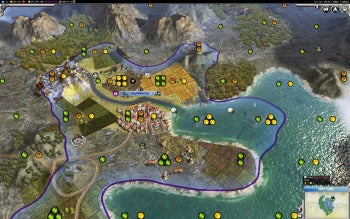 Civilization VThe
other issue that’s shaping games today is the blurring of genres.
Multiplayer first-person shooters often have a strong strategic element,
particularly in commander mode. Some real-time strategy games,
particularly tower-defense games, are adding a first-person element. So
don’t completely discount the value of a good GPU. Civilization V, for
instance, looks much better in DirectX 11 mode than in DirectX 9, but
also requires more graphics muscle in the newer mode.
Civilization VThe
other issue that’s shaping games today is the blurring of genres.
Multiplayer first-person shooters often have a strong strategic element,
particularly in commander mode. Some real-time strategy games,
particularly tower-defense games, are adding a first-person element. So
don’t completely discount the value of a good GPU. Civilization V, for
instance, looks much better in DirectX 11 mode than in DirectX 9, but
also requires more graphics muscle in the newer mode.3. Graphics: Consider Your Display
I know, you’re itching to drop hundreds on a spanking-new, high-end graphics card. Your games will look so much better on your 20-inch display, with its 1680-by-1050-pixel resolution.Wait, what?
Once you understand which types of games you’ll be playing, you should think about the GPU. Even in CPU-heavy titles, graphics remain an important aspect of gaming, so you want to buy the best possible graphics card within your budget. On the other hand, you don’t want to spend too much. It always amazes me when I see someone drop a cool grand on two high-end graphics cards to drive one 1080p monitor, and then run most games at default settings.
You might prefer a high-end card for several reasons. For example, you may want to enable antialiasing in most titles. Perhaps you’re interested in stereoscopic 3D, which requires nearly double the graphics horsepower. But in those cases, you need to know what you’re doing. Buying a pricey graphics setup, and then never adjusting your game settings, is an utter waste of money.
As a rule of thumb, I allocate one-third of the cost of a gaming rig for graphics. So if your system budget is $1000, for instance, don’t spend more than about $330 on the graphics hardware. Note that the prices of cards using the same graphics chip can fluctuate. In general, I avoid most overclocked graphics cards--you don’t get much additional performance, and you may run into stability issues in the long term.
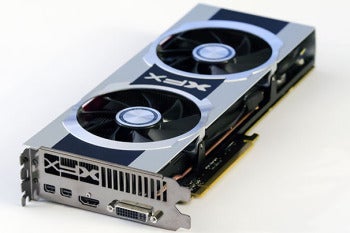 You
should consider getting the most recent generation of GPU you can
afford. Unlike CPUs, newer-generation GPUs often perform significantly
better than previous generations do. As an example, today’s Radeon HD
7850 outperforms the high-end, $500 cards from two years ago, and it's
under $300.
You
should consider getting the most recent generation of GPU you can
afford. Unlike CPUs, newer-generation GPUs often perform significantly
better than previous generations do. As an example, today’s Radeon HD
7850 outperforms the high-end, $500 cards from two years ago, and it's
under $300.As for displays, while image quality is important, so is frame rate. The great thing about modern LCD panels is that low-latency monitors are common and inexpensive. If you appreciate higher color fidelity, you may want a monitor using some form of IPS LCD technology, but that’s more of a “nice to have” rather than a requirement.
4. CPU and Cooling
I’ll say this once: You do not need six cores to play your games.You’ll find that many high-end gaming PCs are packed with Intel six-core processors. Now, I love my hexacore desktop system. I play games on that machine, too. But I also do photo and video editing, plus other tasks that can take advantage of six cores and twelve threads. If the main purpose of your system will be to play games, it’s better to dial back a little on the CPU cost and up the ante on the graphics (or on an SSD, discussed on the next page.)
If you really want a high-end platform, Intel makes the Core i7-3820, a quad-core processor that plugs into the LGA 2011 socket. It’s relatively affordable, at roughly $300. The LGA 2011 platform offers tremendous memory bandwidth, given its four-channel memory architecture.
On the budget end, Intel recently shipped the Core i5-3450, which you can find for under $200; it can run in lower-cost motherboards based on Intel’s LGA 1155 socket.
If low noise levels appeal to you, consider a system with one of those newfangled sealed liquid CPU coolers. They’re quiet, plus they help your system run a little cooler.
5. Memory
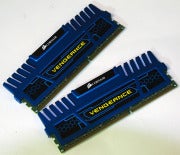 New
motherboard core logic now supports high-speed memory--that is, DDR3 at
1600MHz or faster. Most modern motherboards are dual-channel, with a
few higher-end, socket 2011 boards supporting quad memory channels. It’s
worth noting that even dual-channel systems running Ivy Bridge CPUs can
pump out nearly 30GB per second of peak memory bandwidth, which is
plenty for most games.
New
motherboard core logic now supports high-speed memory--that is, DDR3 at
1600MHz or faster. Most modern motherboards are dual-channel, with a
few higher-end, socket 2011 boards supporting quad memory channels. It’s
worth noting that even dual-channel systems running Ivy Bridge CPUs can
pump out nearly 30GB per second of peak memory bandwidth, which is
plenty for most games.DDR3 memory also happens to be fairly cheap currently. It’s worthwhile to go with at least 8GB of memory, if you’re running a 64-bit version of Windows. Windows 7 Home Premium currently supports a maximum memory configuration of 16GB, though, so keep that in mind as you load up on RAM.
6. Storage: Think Solid State
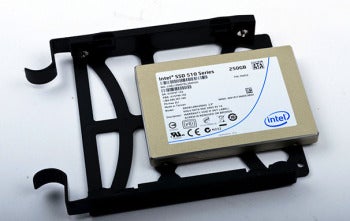 In
the context of a pure gaming system--one that you don't plan to use for
archival storage of photos or digital video, for example--you should
seriously consider buying a solid-state drive.
SSD prices are dropping substantially: You can now find 256GB SSDs for
around $200, and even 480GB or 512GB SSDs for under $400. Yes, that
costs more than a 1TB hard drive. But the benefits of an SSD include
quick boot times, incredibly fast loads of games and game levels, lower
power use, and less noise.
In
the context of a pure gaming system--one that you don't plan to use for
archival storage of photos or digital video, for example--you should
seriously consider buying a solid-state drive.
SSD prices are dropping substantially: You can now find 256GB SSDs for
around $200, and even 480GB or 512GB SSDs for under $400. Yes, that
costs more than a 1TB hard drive. But the benefits of an SSD include
quick boot times, incredibly fast loads of games and game levels, lower
power use, and less noise.If you’re on a very tight budget, you might consider a motherboard based on Intel’s Z68 or Z77 chipset with a small (20GB or so) SSD to use as a hard-drive cache. The combination of a small SSD and a 1TB hard drive offers better performance than a single hard drive.
What about optical drives? If your system is exclusively for gaming, a low-cost recordable-DVD drive is sufficient. You can find fast DVD drives for under $30, and those are often the default types of optical drives if you're buying a game system off the shelf. A Blu-ray drive isn't necesary, unless you have the burning desire to watch high-def Blu-ray movies on your PC. More than likely, any optical drive will see relatively little use, given the prevalence of digital download services such as Steam and EA's Origin.
7. Power
Modern PCs are substantially more power-efficient than machines made a few years ago. A quad-core CPU, plus a midrange GPU, can idle at under 70 watts, and full load power in an intensive game consumes less than 300W. Unless you plan on significantly overclocking your system, or running two high-end GPUs simultaneously, a 500W power supply should be more than enough.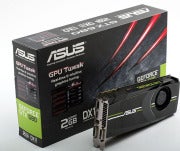 I recently built a fairly high-end gaming system, with a Core i7-3820 CPU and an Nvidia GTX 680-based graphics card. The whole affair idles at just 68W,
and the maximum power draw I’ve seen on that system is 336W. That’s
about as green as you can get on a high-end PC. I used a 650W power
supply in that build, but it’s an 80-Plus Platinum-certified unit, the
most efficient kind. PSU efficiency ratings range from 80-Plus Bronze
through Platinum, and most power supplies rated as such are far more
efficient than previous generations of PSUs.
I recently built a fairly high-end gaming system, with a Core i7-3820 CPU and an Nvidia GTX 680-based graphics card. The whole affair idles at just 68W,
and the maximum power draw I’ve seen on that system is 336W. That’s
about as green as you can get on a high-end PC. I used a 650W power
supply in that build, but it’s an 80-Plus Platinum-certified unit, the
most efficient kind. PSU efficiency ratings range from 80-Plus Bronze
through Platinum, and most power supplies rated as such are far more
efficient than previous generations of PSUs.8. Motherboards and Cases
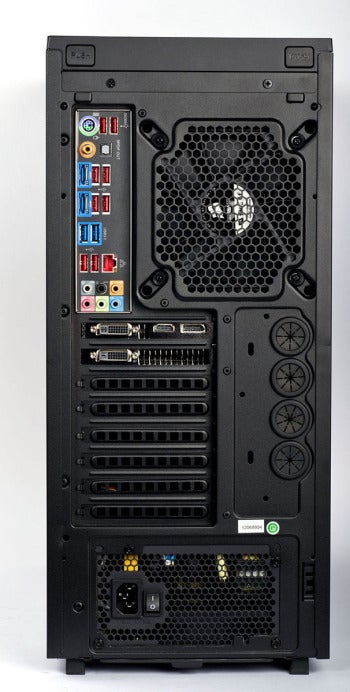 If
you’re buying a system off the shelf, you probably don’t need to worry
much about the motherboard. You just want to be sure that it has some
key features, such as plenty of USB ports. If you’re building a system,
however, you’ll want to confirm that the motherboard supports the CPU
and memory speeds you desire. LGA 2011 CPUs, such as the Core i7-3820,
need a motherboard with an LGA 2011 socket. An Ivy Bridge CPU requires
an LGA 1155-based system. If it's an AMD Bulldozer CPU, you'll have to
get a socket AM3+ system. If you want to overclock your PC, make sure
that it supports all the settings you need in its BIOS, and that it has
the robust power regulation necessary for overclocking. If you’re not
overclocking, though, you can opt for a less-pricey board.
If
you’re buying a system off the shelf, you probably don’t need to worry
much about the motherboard. You just want to be sure that it has some
key features, such as plenty of USB ports. If you’re building a system,
however, you’ll want to confirm that the motherboard supports the CPU
and memory speeds you desire. LGA 2011 CPUs, such as the Core i7-3820,
need a motherboard with an LGA 2011 socket. An Ivy Bridge CPU requires
an LGA 1155-based system. If it's an AMD Bulldozer CPU, you'll have to
get a socket AM3+ system. If you want to overclock your PC, make sure
that it supports all the settings you need in its BIOS, and that it has
the robust power regulation necessary for overclocking. If you’re not
overclocking, though, you can opt for a less-pricey board.Similarly, the case you get when you buy a premade system is what you're stuck with. For DIY enthusiasts, a gaming PC case should offer good airflow, but it should also provide quiet acoustics. The last thing you need when you're trying to listen to the nuanced dialogue in some games is to have your case cooling fans roaring like small tornadoes.
9. Input and Control
A host of high-performance gaming keyboards and mice exist to maximize your PC gaming pleasure. However, unless you’re an elite competitive online player, you may not notice the benefits of very high-end keyboards. And even modestly priced gaming mice now support high DPI levels.The real choice is between wireless or tethered input devices. You can find wireless keyboards and mice that offer low latencies and good gaming performance, but they’re often quite expensive. Good tethered gear costs much less.
Many triple-A action titles are ports from consoles, so you might want to add a gamepad. You can even connect an Xbox 360 wireless game controller to your PC via the Microsoft Wireless Gaming Receiver. Alternatively, Microsoft also makes a wired controller for the PC that connects via USB and is identical to the Xbox 360 controller.
10. Audio and Communications
Modern games make heavy use of surround sound. Fortunately, every modern PC ships with on-board multichannel audio codecs that can handle multichannel game audio. Using 3D virtualization software, the system can simulate multichannel audio through stereo speakers or headsets. Discrete sound cards still exist, but they’re pretty rare on modern PCs, and aren’t necessary for good game audio.Speaking of headsets, if you’re into online multiplayer in any form, including massively multiplayer RPGs, you’ll want a headset with a good microphone. USB headsets are the simplest to configure; but if you have a high-end discrete sound card, you may want a high-quality analog headset.
Fire It Up!
Buying or building a gaming PC can be straightforward, if you follow these rules of thumb. Keep your needs in mind, and you’re likely to find the right system for immersive, engaging gaming, whatever your budget. The important part is what you get out of your gaming, not what you spend on your machine. Once your PC is in hand, remember that it’s the game that counts, not the gear.Ref:
pcword
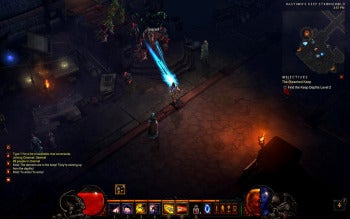
No comments:
Post a Comment